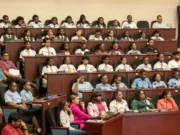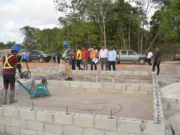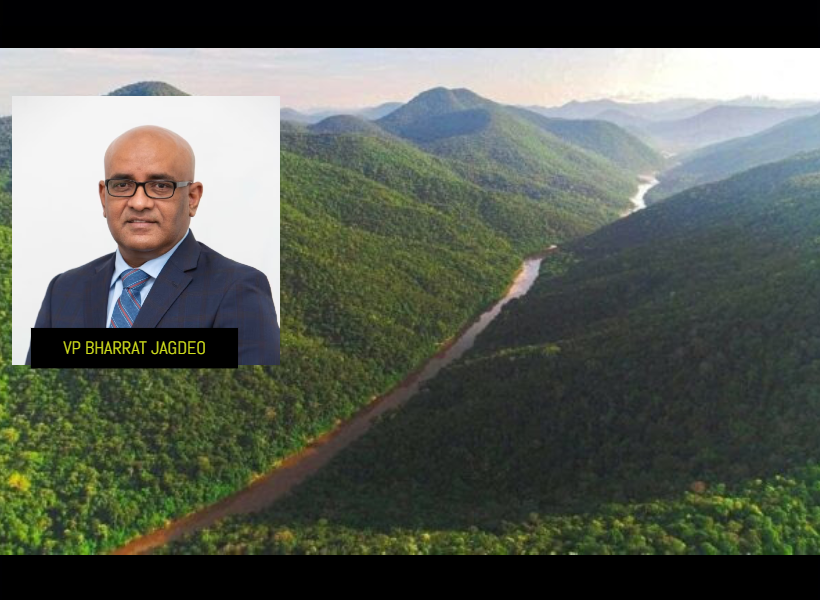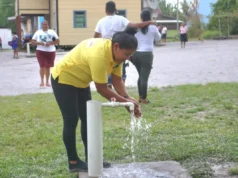Vice President, Dr Bharrat Jagdeo has emphasised that the alarming rate of global deforestation is largely driven by the lack of robust international incentives.
He was at the time speaking during a panel discussion at the high-level discussion on Guyana’s Low Carbon Development Strategy, at the Arthur Chung Conference Centre, Liliendaal, on Tuesday.

The United National Food and Agriculture Organisation estimates that 10 million hectares of forest are cut down each year.
VP Jagdeo said that the global objective of achieving net zero emissions cannot be achieved without widespread recognition of the importance the forest plays in this goal and support for forest preservation.
“Deforestation and land degradation creates about 16% of greenhouse gases. So, I think it’s a lack of recognition globally,” he noted.
Dr Jagdeo relayed that some 15 years ago, Guyana embarked on an endeavour to prove a sustainable and practical model for climate resilience, placing emphasis on forest preservation.
“There was the recognition that forest might play an important role, but there was no support system for it. In the UNFCC, 15 years later, that has not evolved. Forests are still not part of the offset mechanism,” he lamented.
In crafting this model, he explained that Guyana worked to address several concerns expressed by the international community.
“One, the global community was saying forest may be important, but can forest carbon really be permanent? Could it be measurable? Can the money earned from the sale of forest carbon be spent without corruption? Would indigenous people’s rights be respected? Could you have a national buy-in in such a model? And there was a grave doubt that all of these things could be achieved in any model,”
A McKinsey & Company study suggested that Guyana could generate an annual annuity of $600 million over 25 years by deforesting 90% of its land and preserving the remaining 10% as high-conservation areas.
“We said, this is what we will need to out-compete alternate use of the forest,” the VP said.
In 2022, the government inked a deal with Hess Corporation worth at least $750 million for high-quality carbon credits, surpassing the potential revenue from deforesting 90% of Guyana’s forests.
He pointed out, “McKinsey and Company did a study at that time. They showed that the lowest cost abatement solution was forests and investing in forests. So, the world knew that forests played an important role, yet it was unprepared to provide the support for forested countries that they were providing for other abatement solutions.”
He explained that Guyana has already proven the feasibility of this model through its Low Carbon Development Strategy, emphasising that now the international community must decide on implementation, and market-based mechanisms to promote preservation.

Despite having proven that the model is sustainable and measurable, Dr Jagdeo said that the international community continues to present the same concerns, hindering efforts to garner support for the initiative.
“The model has been proven. We can use these resources to support Indigenous communities without encroaching on their land rights. We can get everyone involved. We can use the funds accountably,” he said.
Under carbon credits initiative, the government has guaranteed that 15 per cent of total revenues generated are directed towards Amerindian development.
Since the allocation of $4.7 billion in 2023, the 242 villages across Guyana have implemented hundred of transformative projects catering to sectors such as tourism, agriculture, infrastructure, industrial arts and crafts, and income-generating ventures, all aimed at advancing sustainable Amerindian livelihoods.
A further $2.7 billion will be disbursed to more than 242 villages in 2024, signifying the government’s unwavering commitment to the first people.
“The $750 million, about $110 million will go to the Amerindian communities, $640 million will go to adaptation in Guyana. Every cent will be audited. Every cent will be audited and properly spent and dedicated to climate objectives. So, I believe it’s time for the global community to step up and address this issue and provide the resources at scale,” the vice president asserted. (Extracted from the Department of Public Information)













